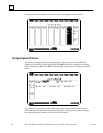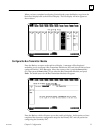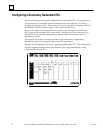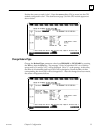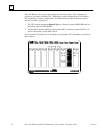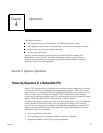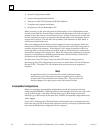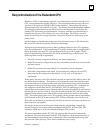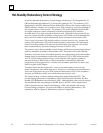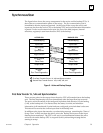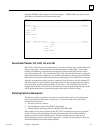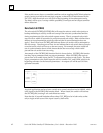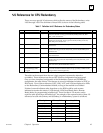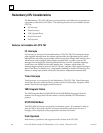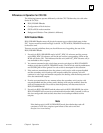
4
58 Series 90-70 Hot Standby CPU Redundancy User’s Guide – December 1993
GFK-0827
Hot-Standby Redundancy Control Strategy
In the Hot-Standby Redundancy Control Strategy, the primary CPU (designated by all
GBCs addressed at bus address 31), is always the preferred CPU. The secondary CPU
(designated by all GBCs addressed at bus address 30) will have the outputs enabled to its
GBCs at all times whether it is in control or not. This is necessary to prevent glitching of
the outputs when a switch is made. The primary CPU on the other hand must disable
its outputs whenever control is manually switched to the backup CPU and then
re-enable them if it is again selected as the active unit. Glitching of the outputs will not
occur on a switch from the secondary to the primary CPU when it is done manually but
may occur if the switch is made automatically due to a failure in the secondary CPU.
For this reason, the primary CPU should normally be selected as the active unit. Anytime the
primary CPU performs a STOP to RUN mode transition, the primary CPU will assume
control from the secondary CPU after a resynchronization has occurred. This will be
done automatically by the control strategy firmware in the PLC CPU.
The primary unit in the hot-standby control strategy will become a functioning backup if
control is manually switched to the secondary unit. The system will remain with the
secondary unit as the active unit and the primary unit as the backup until either another
manual switch is commanded or either unit performs a STOP to RUN mode transition.
A STOP to RUN mode transition always occurs when the unit is power cycled and
proceeds directly to RUN mode or when commanded to transition by either the
programmer or the toggle switch. A failure of the secondary unit while it is active may
result in a glitch in the outputs.
To further clarify the above operation – when a resynchronization occurs for any
reason, the primary unit will become active. However, in order for resynchronization to
occur, one of the units must go to STOP mode and then back to RUN. If the secondary
unit goes to STOP, the primary unit will then become the active unit.
The control strategy is selected during configuration of the Redundant CPU. The
Control Strategy parameter is indicated by a three ASCII character identifier. For Hot
Standby CPU Redundancy this identifier is GHS. Although other values may be selected
and considered valid, any attempts to STORE them to the PLC will be rejected since
GHS is currently the only valid Control Strategy. GHS is the default value for the
Control Strategy parameter. For more information on selecting Redundancy CPU
parameters, refer to Chapter 3, Redundancy System Configuration.



